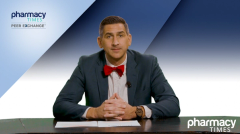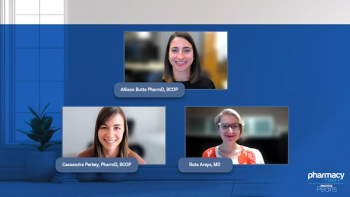
Clinical Value of Nonstatin Therapies
Panelists discuss how evidence from a value-based care perspective demonstrates long-term health benefits, including reduced recurrent events and hospitalizations, as well as cost savings associated with intensive low-density lipoprotein cholesterol (LDL-C)–lowering therapies beyond statins in patients who are very high-risk post-atherosclerotic cardiovascular disease (ASCVD), while also addressing key challenges health care providers face in selecting nonstatin therapies and strategies to overcome them.
Episodes in this series

Evidence on Long-Term Health Outcomes and Cost Savings:
From a value-based care perspective, evidence suggests that intensive LDL-C–lowering therapies beyond statins, such as PCSK9 inhibitors, ezetimibe, and bempedoic acid, provide significant benefits for patients who are very high-risk post-ASCVD. These therapies have been shown to further reduce LDL-C levels, leading to a reduction in recurrent cardiovascular events, hospitalizations, and overall mortality. For example, studies have demonstrated that adding PCSK9 inhibitors or ezetimibe to statin therapy in high-risk patients can reduce major adverse cardiovascular events and improve long-term outcomes. Additionally, while these therapies may have higher initial costs, they can potentially lead to cost savings over time by reducing hospital admissions and the need for long-term care due to complications from recurrent events.
Key Challenges in Selecting Nonstatin Therapies: Health care providers face several challenges when selecting nonstatin LDL-C–lowering therapies for post-ASCVD patients:
Cost and access: Many of the nonstatin therapies, such as PCSK9 inhibitors, are expensive, and insurance coverage may be limited, making them less accessible for some patients.
Patient adherence: Long-term adherence to intensive LDL-C–lowering therapies can be difficult due to adverse effects, complex regimens, or the perception that the therapy is not necessary if the patient feels well.
Clinical experience and education: Providers may not be fully familiar with the newer nonstatin therapies, and a lack of awareness or experience with these treatments may influence prescribing decisions.
Risk of adverse effects: While nonstatin therapies are generally well tolerated, some patients may experience adverse effects, and providers must balance the benefits with potential risks.
Overcoming These Challenges:
- Cost management: To address cost concerns, providers can work closely with patients and insurance companies to explore reimbursement options, such as patient assistance programs, and consider generic alternatives such as ezetimibe.
- Patient education and engagement: Physicians can improve patient adherence by educating patients about the importance of LDL-C reduction in preventing future cardiovascular events, addressing concerns about adverse effects, and offering personalized care plans.
- Professional development: Continuing education for health care providers on the latest therapies and their clinical benefits will help ensure that providers are informed and comfortable prescribing these treatments.
- Monitoring and support: Ongoing monitoring and support, such as regular follow-ups and adjustment of therapies as needed, can help optimize patient outcomes and minimize adverse effects.
Conclusion
In summary, while nonstatin LDL-C–lowering therapies offer promising benefits for patients who are very high-risk post-ASCVD in terms of reducing recurrent events and hospitalizations, challenges such as cost, patient adherence, and provider education must be addressed to ensure these therapies are effectively utilized.
Newsletter
Stay informed on drug updates, treatment guidelines, and pharmacy practice trends—subscribe to Pharmacy Times for weekly clinical insights.



















































































































































































































